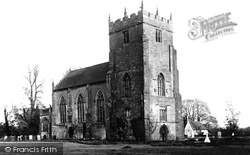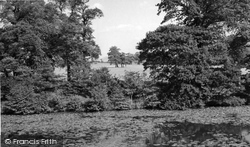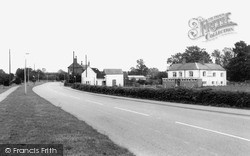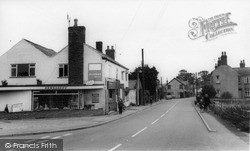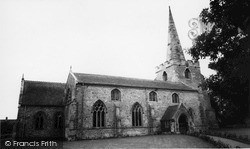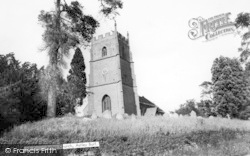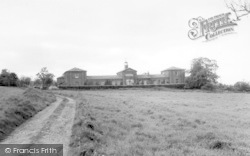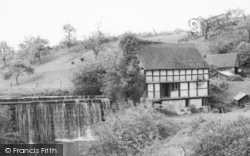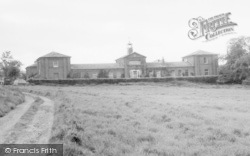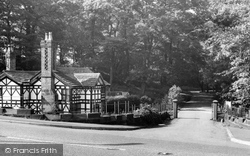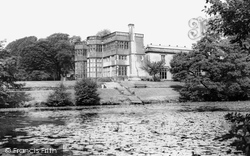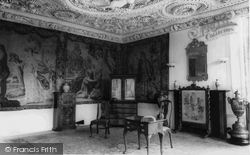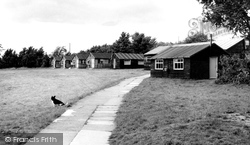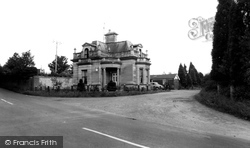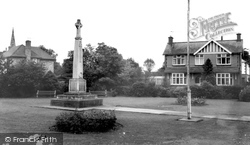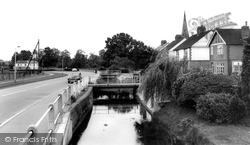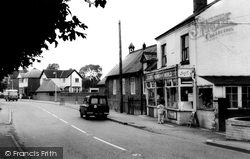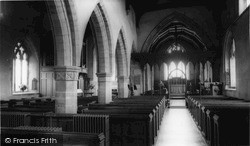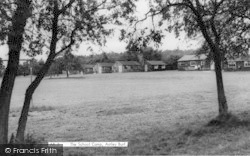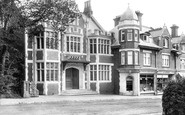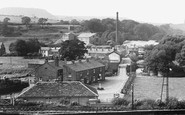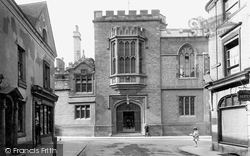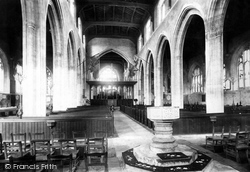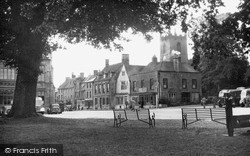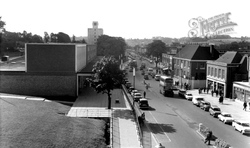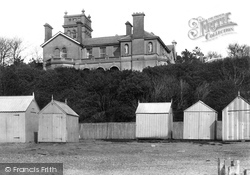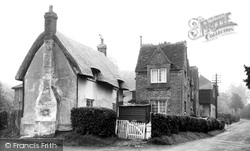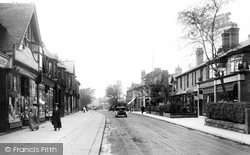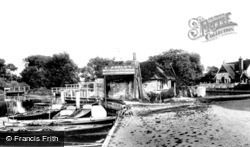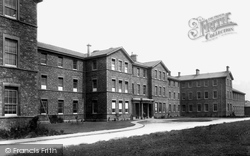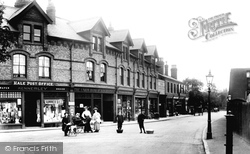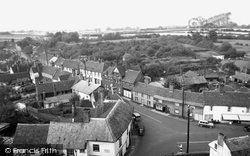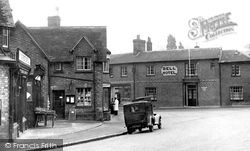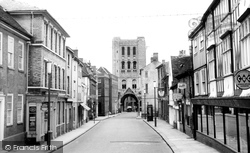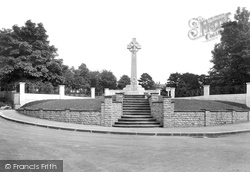Places
10 places found.
Those places high-lighted have photos. All locations may have maps, books and memories.
- Broughton Astley, Leicestershire
- Astley Burf, Hereford & Worcester
- Astley, Warwickshire
- Astley, Shropshire (near Shrewsbury)
- Astley, Greater Manchester
- Astley Abbotts, Shropshire
- Upper Astley, Shropshire
- Astley Cross, Hereford & Worcester
- Astley Bridge, Greater Manchester
- Astley Green, Greater Manchester
Photos
52 photos found. Showing results 1 to 20.
Maps
176 maps found.
Books
Sorry, no books were found that related to your search.
Memories
60 memories found. Showing results 1 to 10.
Parkstone Girls' Grammar School
This was the entrance to Parkstone Girls' Grammar school where I went from 1956, with Miss Allen as headmistress, until we moved to the present site in Sopers Lane in, I think, 1960 or 61, when these buildings were taken ...Read more
A memory of Poole in 1956 by
Robert William Shaw Family My Greatgrandfather
My GreatGrandParents Were Robert William Shaw and Eleanor (Wilkinson) Shaw. He worked as a Roller Coverer at a Cotton Factory, I do not know what the name of the factory was. I know my Grandmothers name ...Read more
A memory of Sabden in 1880 by
My First Job
Just before I was due to leave Peel Brow I was called into Mr (Dinky) Booth's office and told that Turnbull & Stockdale were looking for an Office Boy and that he thought I would fit the bill. I attended an interview with Mr W ...Read more
A memory of Edenfield in 1945 by
Ashley Manor School
I was the very first pupil at Ashley Manor School, and hold some very fond memories of my time there. Atherington was a very important time of my life, I enjoyed the shop, park and the wonderful church, I got my jubilee cup at the village fete. I would love to visit the area again.
A memory of Atherington by
Reminiscing
I was born in NW London. My first visit to Woburn Sands was about 1950 when my Uncle Ted and Aunt Ada moved here. They lived at the 'Dene' Aspley Hill. Aunt Ada did the housework for Mrs Russell the owner of the 'Dene' and my uncle ...Read more
A memory of Woburn Sands in 1950 by
Broughton Astley Pre 1950
This is my second entry about Broughton Astley and may contain some references to items in my first reminisces. As a person 'born and bred' in Broughton Astley, I have fond memories of the village as it was 'in the ...Read more
A memory of Broughton Astley by
The Ghost On Station Road
I lived at 59 Station Road, Royston. My parents moved there in the very early 1960's and I was born in 1969 and my brother David in 1972. It was a semi, with what seemed to be a garden that went on forever. I was ...Read more
A memory of Royston by
Epsom Army Cadets
We were part of the 3rd Cadet Batallion of the East Surrey Regiment. Our base was the wooden huts erected behind Snows cycle shop in East Street after a German bomb obliterated the infants school that was there. The Officer in charge ...Read more
A memory of Epsom by
The Lancaster, Small, Lancaster And Woods Family
I was born in Barton on sea in 1965 My mothers family Harry Lancaster and Emily Jane Small lived at Burnt Lane Lymington. Harry used to work on the Railway. They had five children three boys and two girls ...Read more
A memory of Pilley by
Barnes In The Sixties
My name is John Lines. I will always consider Barnes to be my home. I was born in 1951 in Railway Street which had allotments and even Jack Sedgewick's Pigs between the end of the road and the railway line. The Old Barnes ...Read more
A memory of Barnes by
Captions
24 captions found. Showing results 1 to 24.
A boy from the school, Astley, claimed that Mr Rowell, a grocer, had supplied him with gunpowder for a cork gun. Rowell denied this, and Astley was flogged as a liar.
The octagonal Jacobean font is decorated with the arms of Scotland, Ireland, Maidstone and the Astley family, who were granted the former Archbishop's Palace in Elizabethan times.
The English Civil War ended at Stow-on-the-Wold when the parliamentarian Sir William Brereton defeated the aged royalist Sir Jacob Astley in 1646.
These buildings are in complete contrast to the home of Lord Hasting; the Hall has been a seat of the Astleys for centuries.
The Bailiwick tactfully elected Sir Astley Paston Cooper as the first Mayor of the newly formed Borough, and a great civic celebration was planned with Sir Astley opening Gadebridge Park to the
This Italianate mansion was built c1860 for Mr Eley, the cartridge manufacturer, and was known locally as 'Eley Cathedral'. It was here that the German Empress stayed in 1891.
Built to an original design by Sir Christopher Wren, it is believed that Aspley House's chequered history includes a spell as an outpost of the work of the Special Operations Executive during World War
These 18th-century properties are undoubtedly some that were part of the benefit bestowed by the Moore family in Aspley.
A motor car rattles along Ashley Road. In those days the nearest AA recommended hotel was the Unicorn at Altrincham, a fourteen-bed establishment with garaging for two automobiles.
Ten years later, the designer Laura Ashley opened a mill in the village to mark the start of what has become a fashion empire still in business throughout Britain today.
The soldier is in his best uniform and is probably on his way to the drill hall in Ashley Road, depot for A and B companies of the 1st Volunteer Battalion, Cheshire Regiment.
Ashley no longer lets 'Boats by the Week, Month or Season', nor are they 'Housed and Varnished'. This view is from The Swan pub, still in existence.
When Lord Ashley married Harriet Chichester, the only surviving child and heiress of the 3rd Marquess of Donegall, his father may have made it plain that if he was to become an Irish landlord he would
Prussian-born George Muller arrived in Bristol in 1833 and three years later started building five orphanages on this site at Ashley Down. This is the third.
the High Street and Waterloo Road gives a clear impression of the original narrowness of the eastern section of the thoroughfare, with the old coaching inn, the Spread Eagle, prominent on the corner of Ashley
The business must have recently changed hands, because in the 1906 directory it was the premises of Charles Riley, and Kennerley's shop was at 112 and 114 Ashley Road.
The red brick Ashley House, with the large white gable (centre), was built for Joseph Simpson in 1875; due to its cost, it was known as Simpson's Folly.
The best part of Thames Ditton architecturally is north and west of this viewpoint, which shows the post office at the High Street's junction with Ashley Road.
It survives as Ashley House and is now a Shaftesbury Home. Its battlemented tower and Arts and Crafts- influenced design makes it one of the better convalescent homes architecturally.
at High Street and Waterloo Road gives a clear impression of the original narrowness of the eastern section of the thoroughfare, with the old coaching inn, The Spread Eagle, prominent on the corner of Ashley
These opposing views of the town centre illustrate the character and quality of life in Aspley Guise.
On the left all the buildings are timber-framed, although several have later brick frontages: for example the grocer's shop, now Gavin Ashley's, is dated 1835.
A private committee was hastily formed and at last, in 1922, the memorial was built fronting Ashley Road at the corner of the cemetery. The names of the 256 fallen were added the next year.
Lester Bowden died in 1980, leaving his sons Richard and Warwick in charge of the rebuilding programme occasioned by the Ashley Centre.


